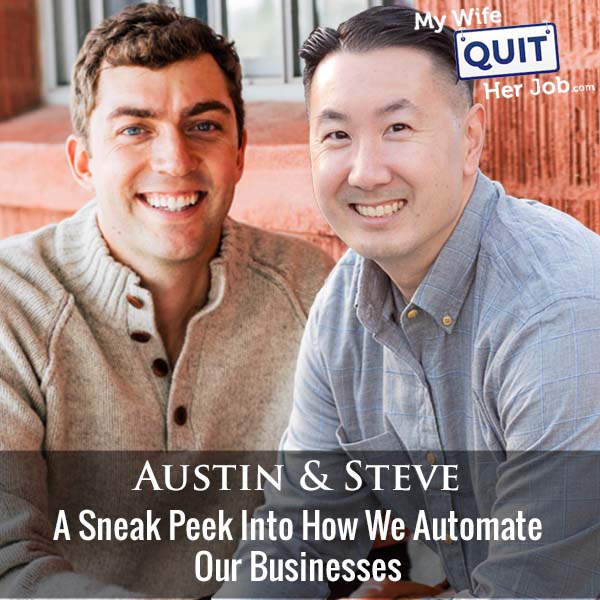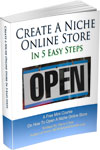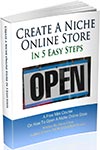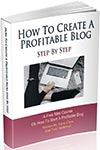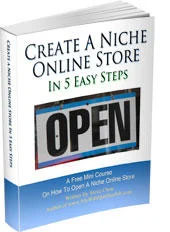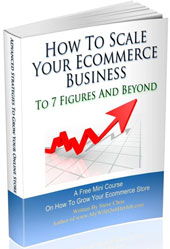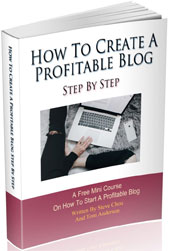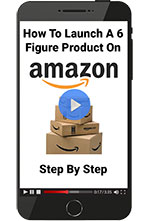Podcast: Download (Duration: 44:21 — 51.0MB)
In this special episode, Austin Brawner and I interview each other and talk about the different ways that we both automate our businesses.
Thanks to computers and automation, Austin and I are able to run extremely lean businesses and we reveal our philosophies and our efficient methods openly in this podcast.
Austin runs the E-commerce Influence Podcast which is one of the few podcasts that I actually listen to. He has a wide breadth of business knowledge and he really knows his stuff.
Get My Free Mini Course On How To Start A Successful Ecommerce Store
If you are interested in starting an ecommerce business, I put together a comprehensive package of resources that will help you launch your own online store from complete scratch. Be sure to grab it before you leave!
What You’ll Learn
- How Austin and I automate our businesses.
- 6 things that you can automate in your own business to make your life easier.
- Different platforms and tools we use to increase efficiency.
Other Resources And Books
Sponsors
Postscript.io – Postscript.io is the SMS marketing platform that I personally use for my ecommerce store. Postscript specializes in ecommerce and is by far the simplest and easiest text message marketing platform that I’ve used and it’s reasonably priced. Click here and try Postscript for FREE.
Klaviyo.com – Klaviyo is the email marketing platform that I personally use for my ecommerce store. Created specifically for ecommerce, it is the best email marketing provider that I’ve used to date. Click here and try Klaviyo for FREE.
EmergeCounsel.com – EmergeCounsel is the service I use for trademarks and to get advice on any issue related to intellectual property protection. Click here and get $100 OFF by mentioning the My Wife Quit Her Job podcast.
Transcript
You’re listening to the My Wife Could Her Job podcast, the place where I bring on successful bootstrap business owners and delve deeply into the strategies they use to grow their businesses. Today, I have my friend Austin Brauner on the show. And this is a special episode because we interview each other and talk about the different ways that we both automate our businesses. Austin and I are able to run extremely lean businesses thanks to computers and automation. Anyway, if you don’t remember Austin, he runs the e-commerce influence podcast.
00:27
which is one of the few podcasts that I actually listen to. And because Austin works with and helps a variety of e-commerce entrepreneurs with their email marketing and advertising, he has a wide breadth of business knowledge and he really knows his stuff. In fact, he is one of the few people that I asked for advice in growing my own businesses. So if you’ve never listened to his podcast before, take your favorite podcast app, do a search for the e-commerce influence podcast and go check it out because you will not regret it.
00:54
But before we begin, I want to thank Postscript for sponsoring this episode. Postscript is my SMS or text messaging provider that I use for e-commerce and it’s crushing it for me. I never thought that people would want marketing text messages, but it works. In fact, my tiny SMS list is performing on par with my email list, which is easily 10x bigger. Anyway, Postscript specializes in text message marketing for e-commerce and you can segment your audience just like email. It’s an inexpensive solution, converts like crazy, and you can try it for free over at postscript.io slash d.
01:25
That’s P-O-S-T-S-E-R-I-P-T.I-O slash D. I also want to thank Clabio, who is also a sponsor of the show. Now, if you’re working around the clock to build the business you’ve always imagined, you want to communicate with your fast growing list of customers in a personalized way, but in a way that gives you time to work on the rest of your business. Now, if you’ve ever wondered how the companies you admire, the ones that redefine their categories do it, companies like Living Proof and Chubbies, well, they do it by building relationships with their customers from the very beginning.
01:53
while also evolving in real time as their customers’ needs change. These companies connect quickly with their customers, collect their information, and start creating personalized experiences and offers that inspire rapid purchase, often within minutes of uploading their customer data. Now, Klaviyo empowers you to do the most important thing for any business, the relationship between you and your customers and the experiences you deliver from the first email to the last promotion. Now, to learn more about how Klaviyo helps you with your own growth, visit klaviyo.com slash mywife.
02:22
That’s KLAVIO.com slash my wife. And finally, I wanted to mention a brand new podcast that I recently released with my partner, Tony. And unlike this podcast where I interview successful entrepreneurs in e-commerce, the profitable audience podcast covers all things related to content creation and building an audience. No topic is off the table and we tell it like it is in a raw and entertaining way. So be sure to check out the profitable audience podcast on your favorite podcast app. Now onto the show.
02:57
Steve, man, I’m excited to chat with you. It’s been a little while since we’ve connected. It was pre-COVID, I think. It was, definitely. You were one of the first hit people to have to take down your event. Yes, that was the most miserable event. Thank you for reminding me of that. I was ready to go. I was excited to go to Florida. And then there was an increasing level of emails being like, we’re thinking about going?
03:26
We’re thinking about not doing it. Oh, now we’re definitely not doing it. And yeah, man, we haven’t chatted too much since then. So I’m excited to reconnect. mean, even rescheduling that thing is still a little bit up in the air because who knows when this whole, when people feel comfortable then going to conferences. So for sure, for sure. Well, I’m excited to chat today. We kind of had this idea of doing a joint episode and thinking about some of the things that we both do well.
03:55
and then talking about them and sharing some of the things that have helped us in growing our business. One of the things I’ve always respected about you and from the beginning I was like, wow, Steve is an incredibly sharp guy and somehow he does all of this just by himself with a VA and he’s figured out ways to automate and make things happen and do a lot with a very small staff. So that’s kind of the inspiration for today’s episode.
04:25
which is five or six things that you can automate in your own business to make your life easier. And- It’s funny, we were talking about this earlier and you are the exact same way. You have two people running this vast organization. That vast organization is a compliment for a small organization. But yeah, man. So I think it’s something really cool and fun. And I think as you stick around in entrepreneurship,
04:54
long enough, especially online entrepreneurship, you can come up with ideas of ways to automate things that maybe in the beginning you wouldn’t have thought of. So I can kick off with my number one thing that I’m excited about automating and that we think we’ve done a really good job and that is hiring. And hiring, I think for a lot of people, it’s something that they kind of dread. They’re like, oh.
05:21
I got to hire somebody, oh my gosh, it’s going to take so much time. It’s going to be so frustrating. I’m going to be doing all this work and then maybe get the wrong person. So I kind of take a different approach and this has come from having my first job. hired quite a few people, like over 30 people, and we learned a lot during that. And the way that I look about this automation process is we have really systematized down to
05:51
multiple, like, I guess it’s kind of a mindset. First things first, my mindset is I think about marketing our business to a potential new hire, just like I’m selling a product. So the same amount of work going into like a sales page for a product goes into hiring for a job advertisement. Because I know that hiring somebody who’s incredibly talented,
06:18
and is so valuable to the company, it’s worth my time there. So once I do that, I use Airtable to collect all of the applications that we get. Why don’t you talk about what that is, just in case people don’t know what that tool is. Airtable is one of the things I’m most excited about right now as a tool. It’s kind of like Excel on Google Sheets on steroids, in a sense that you can, it’s,
06:47
all the really good stuff that you get from Google Sheets and Excel, like being able to pull in information, look at it in different viewpoints, and also the ability to then connect it to other apps, applications, and tools, and pull in information and push information. So it’s extremely flexible as well. And so basically the way that we use it is when somebody applies to a job app, they go through a form that we’ve created on our website with Airtable.
07:17
and it’s hosted by our table. And that information is then pulled into our, what looks like a Google Sheet, but a Google Sheet that’s dynamic. And as people come into this, we can move them from round one to round two. We have little tripwires and stuff that we can see if somebody’s gonna pass the round one to round two requirement. That’s something simple like including a word in their cover letter that we’ve specified. Then from round two to round three, we can visualize
07:47
and move people through this whole process almost like a sales funnel. So by the time they get to the round three and four, we, and we’re ready to actually have an interview. We’ve, they’ve gone through these steps and we’re, I’m interviewing basically typically on an average of like four or five people for every 200 applications. it’s really, really helpful. And my time is saved massively. And also we tend to get higher quality people.
08:15
because they go through this step-by-step process. I’m just kind of curious since we’re talking about this. So round one is something stupid like include a word or subject in your application, right? What do rounds two and three look like? Round two and three include listening to a couple of podcast episodes, really episodes that are like very deep in like the ethos of what my business is about. So one with a guest and one with just me talking about our business. if people are really excited after listening to the podcast episode, then they write a blog post.
08:45
a very short one to understand if they can write. So writing, we’re remote team, and I found that the ability to write is incredibly, incredibly important with a remote team. So that’s the next step, is going through a blog post. After that, the next step is recording a YouTube video, introducing themselves for two minutes. So by the time we get to the actual meet them in person,
09:12
We’ve got a YouTube video, we know they can write and we know they can follow it, pay attention to details. So these are obviously for higher paid positions that are very skilled, right? Yes. Yeah. But actually I would do a similar version. I’ve done a similar version of this with less steps for lower level positions. And I actually think that they’re just as important for lower level positions because with a lower level position, the thing that often you really need is someone to follow instructions.
09:42
Yeah, you know, what’s funny about that is we followed a similar scheme for hiring for Bumblebee linens. Yep. But what we found is we got almost no applicants that could make it through that entire funnel. And like literally when one person finally made it through the funnel, we’re like, all right, great. We’re going to, we’re going to interview that person. It’s pretty sad really. So I think there’s like a happy medium, at least in my experience when, when hiring like the lower level types of employees.
10:07
Were you there at eCommerce fuel when I was talking with Bill D’Alessandro about the number one question he asked applicants that determined whether he’s going to hire them or not? No, I’d love to hear it. So he asked them, he says, so he gives them an assignment. Like, let’s say you work for me and I gave you an assignment that was due Friday at 4 30. But then over the course of the week, I gave you a whole bunch of other stuff and you weren’t able to work on that one assignment that’s due at 4 30 on Friday. So
10:36
Let’s say four o’clock rolls around and you find that you don’t have time to finish it before you have to complete your work day. What do you do? Oh, it’s a good question. And so some people might say, hey, you know, I’ll email you and I’ll tell you, hey, I didn’t get a chance to do it, but I’ll get it to you first thing Monday morning. But the right answer to that question is I’ll just stay as long as it takes to finish it up. Cause that was the due date was today. Yeah. Right. And so that’s it. Number one hiring thing.
11:05
That’s great. That’s his number one hiring question that determines whether you make it in or not. It’s really interesting. think I would frame it in a way where if you, the moment that you know that you are not able to complete it, what do you do? And I’d love to hear what people say, how they would communicate that. Right. It’s interesting, right? Cause everybody has too much on their plate at all times and trying to figure that thing out is what’s funny about that is like his best employees. They just say, what do you mean? I can’t finish it.
11:35
Of course I’m gonna finish it. Right. Yeah. Well, Steve, let’s go to something you’re really, really good at. And number two, I’ve got content repurposing. Right, you have a very small team, but you have a big footprint out there of the content you produce and you push out. How do you do Yeah, so every week, you know, for some reason, when we were talking about this earlier, I felt like I didn’t do that much in this area, but you kind of convinced me that I did, so.
12:02
We’ll talk about it now. So every single week I put out one blog post, one podcast episode, one YouTube video. And then I have actually Instagram and Twitter now on autopilot. And I’m going to be starting a TikTok channel in a couple of weeks. Now on the surface, that actually sounds like a lot, but I actually do a lot of content repurposing and it, for me, it always just starts out with the blog. Every single week on Sunday morning while my kids are in Russian math for four hours. Just thought I’d put that in there. I sit down.
12:32
and I write literally for four hours straight and I put out that one three to 5,000 word blog post. And from that blog post, sometimes for my YouTube video, all I do is just take the exact words sometimes, because I write like how I talk. Sometimes I take those exact words and just put out a YouTube video. Other times I’ll just take bullet points from that, just turn on the camera and just riff on it. And for YouTube especially, I think it’s important that you have a setup in your office where all you got to do is click one button and start recording.
13:02
Like the lights have to be set up and everything. If you don’t have that, forget about it. It’s not going to happen. So what I do then after that, so I have this blog post and for the podcast, that’s not really automated because the purpose of the podcast for me is just to get to know people. So I’ll just have someone like my assistant schedule out interviews in advance, which require no prep on my part for the most part. Cause I just riff based on the answers that they give kind of like how we’re doing it right now for Twitter and social media.
13:30
Uh, I actually hired recently a consultant that just consumes all of my content, YouTube, podcasts, everything, and puts together these little, you know, tweets that go out three times a day. And then I take those and I put those on Instagram and those are actually going to be the fundamentals of my Tik TOK channel as well. And so there’ll be the tweets, what do you post the tweets, like pictures of the tweets on Instagram or do you do something different on Instagram?
13:59
So the tweets are actually in this Google sheet, which ones are going out. And I kind of see how they perform on Twitter and I the best ones. And then I, this, this part’s manual. I’ll find like a family picture or some picture to go along with it for Instagram. Cool. Cool. And then TikTok. So how long have you been taking dance lessons to prepare for your TikTok entry? You know, I just finished, I finished a three month series on hip hop dancing, which is going to be the fundamentals of my TikTok channel.
14:29
It’s gonna be good. what’s funny about this is I told Austin this and you actually believed me. I did, I did. Before he went on, he was talking about TikTok and I was like, that’s impressive. Steve’s committed to his craft. Okay, so very interesting. So you’re repurposing everything here and you’ve got now from one blog post, that one blog post turns into Instagram, tweets, a YouTube video, and also an email. Does the email go out as well?
14:58
Email goes out, that, I mean, that part’s not automated, but yes, I email out all these pieces of content to my audience on a weekly basis. Cool. And does that come from the writing or is that a separate email that you’re writing? Usually it depends how much time I have. Like if I’m, if I don’t have that much time, sometimes I’ll just cut and paste like an excerpt from the blog post as an intro for the video. But you got to understand like all these pieces of content aren’t going out at the same time.
15:23
Yes. Right. So I stagger them. So like the YouTube video of that blog post might come out like months later. Okay. That makes sense. feel like it’s all going out at the same time. And how do you manage that? Do have any tools that you use to manage that? Or is that all Google Sheets? It’s all just Google Sheets. I mean, that part is kind of manual and there’s no real method. I just wait and see if it’s been long enough basically that I publish the other post. Cool. That’s awesome. And so you’re doing all of this. you have anyone helping you?
15:53
push, publish, or is it just you? So the Twitter stuff is all automated. Instagram, that’s all kind of curated by me because I feel like my Instagram is a little bit more personal. Yeah. I use a tool called planily to just schedule everything out. So I’m scheduled out for like three months already. Oh, awesome. So I don’t have to touch that podcast. My, my VA handles that. My, my VA actually edits all my videos. Also, she actually edits all my Tik TOKs as well. So that, yeah, she’s been amazing.
16:21
Steve, I can tell already you’re going to be going to have a massive TikTok following. Dude, I’m excited. I just actually interviewed a TikTok consultant this morning on my podcast. Cool. So she gave me all these pointers. think in terms of expanding your reach, it seems like TikTok is probably the best platform right now or the fastest growing one for sure. Cool. So let’s move to the next one here on automations. So outsourcing email.
16:50
And I think we can both talk a little bit about this. I can start and dive in a little bit about how, how I do it. This has been one of the best, the best changes that I made, I would say in the last five years was directing my email to help scout and getting some help filtering through my email before it gets to me. So both Steve and I put out a lot of content. And when you put out a lot of content, you get a lot of responses.
17:19
And some of those responses I really want to see. And some of those are actually 95 % of them are pitches to go on my podcast. I would say you’re probably familiar with that. You probably get the same. And so I’ve got it set up so that my email goes to a help scout. And then I have my assistant who filters through the email and then assigns the ones to me that make the most sense for me to respond to. And sometimes she’ll even include a note. And if I get an email that is important.
17:47
I’ll also just send me a message on Slack saying, hey, here you got a new email about this to go check it out. Saves an incredible amount of time. So Austin, how come my emails have not been making through your filters? That’s what I want to know. That was actually explicit instructions to my assistant. To forward your emails on to a Chinese factory that.
18:13
that is going to be hard selling you widgets for the next. I still get so, guess every once in I still get tons of emails from going to the Canton fair. And they’re usually very hard sell emails about like the newest widget. But yeah, that’s what I do. Steve, what do you do? I know you’ve got your own process here. Yes, I don’t use Help Scout. I use a tool called Gorgias. And the reason why I like Gorgias so much is because you can literally tie in all of your social media channels. So you don’t do as much social, I don’t think as I do, but.
18:42
Facebook, Instagram, every time I post one of those I get comments and I want to make sure that people get responses to those comments. So all emails, social, Facebook Messenger, even SMS, they all come into the same platform. And then my VA goes through and just flat out just closes the one for podcast requests actually, he just closes a whole bunch of those. And then for people who are actually, you know, sending me an email, like there’s canned responses for certain things and
19:09
Just like you, only the most important ones get filtered to me that I finally answer. Yeah, it’s incredible and Gorgias is a great tool. I think I’ll probably make the transition after this conversation to Gorgias because I’m doing more social and we’re ramping that up. Yeah. Does Help Scout not handle social? Doesn’t, it doesn’t. Ah, interesting. It just does email and also like support beacons. So people can click on the support beacon on my membership.
19:38
ask a question, it goes directly in. So yeah, I don’t want this to be a gorgeous ad, but what else? It also does all my e-commerce store stuff comes in and it imports all that information. So one click of a button. It’s amazing. It’s fantastic. There are also sponsors of our podcast, uh, e-commerce. So I, I, I’m a huge fan. I just need to make the transition. Cool. Well, the next one here is something that I think you’re really good at. And as we were going into this episode, I was like,
20:08
You know, Steve, I know you have so much automated and you do so much with such a small team. And one of the things you mentioned was you like to delegate a lot of stuff to the floor. What does that mean? What do you delegate into the floor and how do you think about what’s important in your business? So by delegating to the floor, that’s actually a nice way to say I drop a lot of things on the floor. You know, sadly enough, I don’t really have like a set method, but for me, like I have this
20:37
The way I do this is ridiculously primitive. I actually have a draft in Gmail of all the tasks that I want to get done in a given week, and those are prioritized. So in a given week, if there’s something extraneous that comes up, I always open up my draft in Gmail and say, hey, does it fall under these directives? If it doesn’t, and I don’t think it’s important for the long term, I literally just drop it on the floor. If it’s something that might be longer term, that’s something I need to do.
21:07
I add it to that drafts under the long-term to-do list. Unfortunately, what ends up happening is a lot of my wife’s things fall into that and I get in big trouble. don’t think she’s seen my email drafts yet, but there’s a lot of the stuff that she wants kind of below. Like if she found that draft, I’m sure she’d move them up. Do you do something similar, Austin? Kind of curious. It’s interesting. I don’t use a Gmail draft. That’s a ultra power move. I’ve never heard of that, but that’s for you.
21:36
I definitely, I think the way that we do it is we do a lot of like sprints. So we like to work on projects for like two to three weeks at a time and try to get something like shipped. And within that process, it eliminates a lot. So if we say we have like a hard deadline, we’re like, Hey, we’re to put something out on this day. Then when you look at that and you go look at all the steps, it automatically eliminates a lot of the extraneous stuff.
22:05
because you’re planning on moving something forward. Like when I launched our membership, the coalition, we did it in 30 days from start deciding to do it to launching. And that required us to really limit a lot of the features that we had to get something out. And then on a personal level, I try to limit myself down to like three to five big things a week that I do. And I think there’s also just a mindset side of just realizing that like,
22:35
At a certain point, when you’re an entrepreneur, you recognize that you’ll never have enough time to do all the things that you want to do. So just give up that mindset of trying to check everything off. And I think that that’s been really helpful is just recognizing that I’m always going to have 10 to 20 times more stuff to do than I have time to do. Do you have a running task list though of those things that aren’t as high priority? I don’t, no.
23:02
I don’t. So when you say that, you have like a running task list of things that aren’t high priority. It’s like the things that you consistently. Hey, let me open up my drafts right now. Great. I’m very interested in this. Yeah. Okay. So here’s something that’s been on my back burner for a little bit. Like I actually haven’t converted over to the Facebook conversions API yet. Okay. It’s something that’s on my list, but it’s not something that’s going to directly bring in more sales. Yes. Right. So that’s why I keep pushing it down. I know it’s important, but I keep pushing it down.
23:33
Yeah, so I don’t have a running list, but I definitely run it through like a mental filter around that. at the end of the day, I’ll look at like, we have like our rocks for the quarter and the things that we want to move forward and always be cross-referencing the rocks that we have versus the stuff that I’m doing. And it’s like, is this really related to what I said that I wanted to do 45 days ago? Cause usually the first 45 days of a quarter, it’s like really easy to stick to your
24:03
priorities, the second 45 days, you’re far enough away that you start to like forget, we had this great meeting and we made all these plans. So that’s when I’m more cognizant of looking at my plan for the quarter. I mean, I know one thing that I need is what I call a mind sweeper. I actually had one of these at my last job, you know, when I was working full time, like I’m really excited about the big things like the big rocks that move things. But then like I leave like this trail of destruction behind.
24:33
Right? Where I’m just trying to get things done. Things are moving forward, but it might not be polished. I need someone just kind of behind me polishing everything that I do as I lay my path to destruction. Yeah. That sounds like a great role. That sounds like something you could hire for using my air table set up. Yes, exactly. It’ll be an extensive interview automated process where I asked them, Hey, it’s four 30 and you didn’t get it done yet. What are you going to do? What are you going to do?
25:00
Yeah, and you give them some half-baked blog posts and see what they can turn it into. That’s actually amazing. So people actually write the blog posts. That’s actually more difficult to me than putting out a two-minute YouTube video, actually. Well, yeah, we keep it short, though. It’s like 500 words, like a 500-word answer to some sort of a response and see how well people… And for every role, it’s different. Like, for a customer service role, we didn’t do that. We did a reply to a customer.
25:30
So here’s a scenario, write their email response. That was fascinating actually, because it was like 90 % of people just totally blew it up and then 10 % of people got it perfectly. It’s so interesting. It’s like a very basic email response to a customer who might be frustrated and 90 % of them were just like, okay, even though everything looks good on your resume, there’s no chance we could ever hire you considering your email response for this customer.
25:58
I know your interview question. Let’s say Steve Chu emails you here. How do you deal with this? Do you A, forward to a factory in China? Well, let’s get to number five here. And number five is one we can both talk about, which is running automation for email marketing and SMS and what that means for your business and for also for our clients, the people that
26:27
have gone through our trainings in our communities. This is one, I still think email and SMS, email automation is one of the most powerful things you can do after we’ve both been in this e-commerce space, online space for quite a few years. And there’s always new flashy things that pop up and people talk about. But the end of the day, email is still incredibly, incredibly powerful to automate.
26:55
and provides so many levers for business owners to be able to do more with a smaller team.
27:04
If you sell on Amazon or run any online business for that matter, the most important aspect of your long-term success will be your brand. And this is why I work with Steven Weigler and his team from Emerge Council to protect my brand over at Bumblebee Linens. Now what’s unique about Emerge Council is that Steve focuses his legal practice on e-commerce and provides strategic and legal representation to entrepreneurs to protect their IP. So for example, if you’ve ever been ripped off or knocked off on Amazon, then Steve can help you fight back and protect yourself.
27:32
Now, first and foremost, protecting our IP starts with a solid trademark and Emerge Council provides attorney-advised strategic trademark prosecution, both in the United States and abroad for a very low price. And furthermore, the students in my course have used Steve for copyrighting their designs, policing against counterfeits and knockoffs, agreements with co-founders and employees, website and social media policies, privacy policies, vendor agreements, brand registry, you name it. So if you need IP protection services, go to EmergeCouncil.com and get a free consult.
28:02
And if you tell Steve that I sent you, you’ll get a $100 discount. That’s E-M-E-R-G-E-C-O-U-N-S-E-L dot com. Now back to the show.
28:12
You know, it’s funny you say that over the years I’ve been drawn to new shiny objects. Like for example, I went on this Facebook messenger kick for two years. Yeah. But I just never learned my lesson with Facebook. You know what I mean? Yeah. Like I used to be excited about Facebook pages back in the day, then groups, but they keep just nerfing everything. And then they just did a gigantic nerf, partly because of Apple, think. But yeah. So email is the one stalwart that’s lasted the test of time. And then I think SMS is going to be another one of those platforms that last the test of time.
28:40
What are your, like, at end of the day, what are the most powerful automations, email automations that you have set up? So, I think the most powerful thing that I do is I keep it simple. Really, I had this one sequence where I only have one product, which essentially is to get people to the store and, sorry, not the store, to the course. Yep. And I have different autoresponder sequences depending on what they’re interested in. Sure.
29:09
Like if there’s interest in selling on Amazon, I have them click over, you know, with the drip, think we both use drip. It allows you to send them different sequences depending on what they’re interested in. But I just have forms and all of my blog posts. I have calls to actions on my podcast, my YouTube videos, and that’s how I build my list. The other thing that I do is I like to cross pollinate everything. So for example, one class might only be available on SMS. And so in order to get this, you know, I have them click on this link, which sends a text message and I say upfront,
29:39
you’re going to get one text message per week and that’s how it’s going to be delivered. And so that way I have like, you know, people on both places, which allows me to reach them more because the deliverability for both platforms, at least SMS is really good right now, but I just noticed that there was a junk folder in my messages on my Android phone recently. And I think that it’s going to probably go in that direction at some point as well. For sure. We can already tell that it’s going in that direction, especially as exponentially the number of
30:07
people texting me for random stuff. Politicians usually lead the way on some of this stuff. And if you get on any one SMS list, you’ll just get hammered to eternity about certain issues. And that’s not a good experience. When I look at some of the email and SMS automations that are incredibly powerful. One, like you, have like a onboarding series. So if somebody signs up, they go through a quiz funnel, ask some questions, and then they go into a sequence.
30:37
Uh, that will, it’s designed to send them to the coalition and sign up. Uh, other things that I’ve put in that have been really helpful have been browse abandonment emails related to that. it’s, you know, browse abandonment emails when people are checking around and I always try to personalize those. So it’s like, Hey, I you were on the, all the website, like hit me, hit reply, hit reply and let me know what you’re thinking about. And a lot of times I get interesting questions about whether or not they should join the course. And.
31:07
From a client perspective, those two are easy ones right away, like card abandonment, browse abandonment, onboarding sequences, and then also replenishment sequences. what’s been interesting, I’ve been working with someone for the last couple of months, they came in with zero email. Like they were doing, I think they were sending like one email every two months. And now we’re up over 30 % of their revenue coming from.
31:37
email marketing in a couple of months because it just got, like you said, like kept it simple, but focused on the powerful stuff. It’s an email mark, email every single week that goes out, like a broadcast email featuring some sort of a product. And then we focused heavily, their replenishables business on a repeat purchase sequence that goes on for literally months. So if you buy something and don’t repurchase, you’ll be followed up about
32:07
this for months and it’s crazy. There’s eight or 10 emails and the email like eight or nine is performing almost as good as the first email. They’re just, it just happens to be replenishable that people buy over time. And so it was inspired kind of by a, you, do you wear contacts, contact lenses? do. Yeah. Okay. Did you ever buy from 1-800-contacts? I do not. Okay. Well, if you do, if you want to see an incredible experience, they’re the most relentless business I’ve ever.
32:37
scene with follow-up because they know if you buy contacts, you have to buy more contacts and they know your prescription. So they just continue to follow up with you every two to three weeks for eternity by SMS and email. it usually and it’s like one click experience where I just can click and buy my contacts. It makes it so easy. So I’ve been replicating that. I’m curious since I know you work with a lot of clients, how do people combine the email and SMS experience for an e-commerce store?
33:07
So this is where it starts to get really exciting. And there’s been some like big rollouts of, you can do this now on Postscript and you can do this on Klavia. And if you are trying to combine the two of them, I think from a strategy perspective, something that’s very interesting is I like to think of like upgrading my email flows. So I’ve been talking about like, how do you upgrade your email flows? So if you take what you’re currently doing and you recognize that
33:34
Maybe a good open rate is like 35%. Well, that’s 65 % of the people have not seen this. So if you’ve got an abandoned cart flow and you’ve got people that are going through this email sequence and you’ve also happened to capture their SMS number, well, you can put in something called like a clean up text message. So if somebody goes through the email sequence and they haven’t purchased something, then maybe you send them a text message. So you add a text message on the end of that.
34:04
or on your welcome series, the same sort of thing. Send a couple of emails and then they haven’t made a purchase, send your emails to like a discount or an offer email, then also hit with them with an SMS message. So you’re kind of, you’re stacking these to work together and you’re taking whatever you’re already doing and you’re just upgrading your flows. And it’s the same like the post purchase replenishment flow. If you’ve got emails going out,
34:33
why don’t you pop in an SMS message every three emails so that you’re not overwhelming people, but you’re getting through to people. So just kind of interpreting what you were saying, would you say that if you sent out an email, but it was unopened, you would send a text message to someone who hasn’t opened.
34:53
Yes, I think it’s a little bit harder to do that specifically because the way that the systems are set up, you’re not going to be able to really tell if they opened or not. I was saying more like if they don’t take the desired action that you want them to take and a desired action of an abandoned cart is to make a purchase. Desired action of a new subscriber sequence is to make a purchase. So it’s more like if they’re not taking those actions, then send a message or two, but don’t treat it the same way. It’s a totally different channel, right? Like you can’t
35:22
You can’t SMS text people the way that you email people. It’s just not acceptable. about for like a direct campaign? Like what I like to do is I’ll start out with email. Yeah. And then I’ll wait like several days and then send out a text to the people who haven’t opened or that’s why I kind of brought it up. I was kind of curious if you do something similar for direct campaigns. Yes, I think that that’s a great and I guess I think of that as like a cleanup campaign, like clean up all the people who had not made a purchase.
35:50
That’s what I think about for campaigns. Yes. It’s a great way to look at it. And also, you know, another way to think about SMS from a campaign perspective, this isn’t really automation, but you know, asking questions and I know you are deep into Facebook Messenger. you kind of like, it’s, the same premise that if you’re trying to launch something from a direct, if you’re like a direct to consumer clothing company,
36:15
hey, we’re trying to decide between these two things, this pink or this green shirt, which one do you like? Having people respond back is a great way to drive sales. I mean, that’s actually the most important aspect of SMS in my opinion, the ability for someone to instantly reply. So the way I get people used to SMS is I say, hey, this is an open line for you guys. Anytime you have a question, just hit reply. Yeah. And that way they’re not going to mark my next campaign as spam. You know, it reduces the chances.
36:45
And I’ve actually closed so many sales through SMS. Yeah. Is it getting immediate response? Yeah. But we also did find out today that it isn’t actually a direct response back to Steve. goes through your filter system. And I found out that none of my emails make it to you because they’re for you. Yeah. So, but yeah, those those are great, great, great ways to do it. And there’s a lot of opportunity there. I love just.
37:13
the opportunity around, I think there’s very few things that are more exciting than automating something that you do consistently away so you don’t have to do it again. So fun. I agree with you. Actually, it’s kind of like engineering work. And that’s, it’s kind of like work I used to do at my full-time job. And it just makes things a lot more interesting and fun. Do you have anything else that you’re excited about? Like tool-wise, tools-wise that you’re using or?
37:43
to help you automate stuff or not? Well, you know my personality, right, Austin? I like to code a bunch of stuff up. Yeah, oh yeah. One thing that I, this has been on my to-do list for a long time. What I’m actually really fascinated about is the ability to text to purchase. Yes, it’s cool. So if already someone has an account, I don’t know if there’s tools out there, I’m sure there’s tools out there that already do this. I don’t know if you’re any your There is, there are, yeah.
38:10
But the idea is they have their credit card stored already somewhere and then they just text back a word in the quantity and then it instantly becomes a purchase. I wanted to write that for myself because then I have infinite control over what I can do. what tools are available that do this for you? Oh man, there’s two on Shopify. let me just think, I’m gonna look it up real quick. I think it’s Electric SMS. Have you used it before?
38:38
Yes, I have. your clients, okay. Does it work though? It does. So it’s, they just changed their name now to Recharge SMS, but it’s ElectricSMS.com. this only, so this one works for, I’m gonna tell you the use case of this. This is if people are on subscription already, and helps automate support and prevent churn. So what that means is that you’ll text somebody and say, hey, your order’s gonna come out scheduled for let’s say like,
39:07
May 6th, for example. And you could text back, modify order, and you can change the order by text. And you can, for example, swap a flavor. You could skip it. You could update the quantity, change your shipping address, your billing info, next charge date, whatever. you could also add a one-time item. So you could add another item to your order on a consistent basis, which is pretty cool.
39:37
And that works for anybody using recharge on Shopify. Actually, I think it doesn’t necessarily have to be Shopify, just anybody using recharge. Oh, okay. So it’s another feature of recharge, basically. It’s a feature of recharge, but it’s a totally different company. It’s like an agency built it. Oh. And that’s, yeah, so it works with recharge. And then I’m trying to think of the other one that I’ve heard of. The other one that I heard of was…
40:04
It’s a one, it’s different. It’s a one click purchase from email, which I thought was interesting. So you send an email and it would be able to just go directly to, you just press like, I think it’s called like a one trick pony or something like that. You press the yes in the email and it automatically purchases for you. So the use case that I was thinking of was you get on live and you try to sell something and then
40:33
It’s easier to say, just text this to actually make the purchase. Or if you do some sort of auction like thing. Basically, the whole premise is having their credit card information stored somewhere. So email would work, SMS, I mean, it doesn’t really matter what the use case. should get in the, so Dirty, I think it’s called Dirty Lemon. Have you been to that website? I have not. So Dirty Lemon, are like text first, a text first e-commerce business.
41:03
If you text them, you will have somebody live going back and forth with you and you can start your subscription directly through text. It’s pretty cool. And they do a lot of their sales using this text message thing. So it’s not exactly what you’re saying, but they’re incredibly good at it. You can be able to see what they’re doing and then code it up and then start your next, I mean, start your next multi-billion dollar app here.
41:31
You know what’s funny, Austin? Like I get so many emails now that I actually look forward to getting a text because it actually stands out. If that makes any sense. Totally agree. I texted you to set this up because I was like, probably should text Steve versus email. Well, that’s the only way I’m going to get ahold of you apparently. For, yeah, that’s, mean, that’s, that’s the beauty of automation. But yeah, this is awesome. And.
42:01
I this is a fun episode to do together. think if you’re listening to this episode on my podcast and you have not listened to Steve’s podcast, Steve, why should they listen to my wife, quit her job podcast? It’s because I bring on guys like Austin to talk about, you know, the latest trends in e-commerce or online business. And everyone I get there, they’re in the trenches. They’ve been pre-screened. Usually I’ve met them in person and they know their stuff. So you can actually trust.
42:30
the words that people say. On the same vein, I encourage all of you to check out Austin’s podcast. And Austin, why should they listen to eCommerce influence? Because I am laser focused on helping eCommerce entrepreneurs build more wealth and live a more fulfilled life. And the way I kind of think about that is by bringing in very interesting people that I’ve met that are doing cool things in our industry.
43:00
try to figure out how they’re wired and try to bring some of those nuggets back to you. awesome. Steve has been great and we’ll talk to you guys soon. Yep. Sounds good.
43:14
Hope you enjoyed that episode and once again, if you haven’t checked out Austin’s podcast, it’s called Ecommerce Influence, go over there now and check it out. For more information about this episode, go to mywifequitterjob.com slash episode 352. And once again, I want to thank Klaviyo, which is my email marketing platform of choice for e-commerce merchants. You can easily put together automated flows like an abandoned card sequence, a post-purchase flow, a win back campaign, basically all these sequences that will make you money on autopilot.
43:40
So head on over to mywifecoderjob.com slash KLAVIYO. Once again, that’s mywifecoderjob.com slash KLAVIYO. I also want to thank Postscript, which is my SMS marketing platform of choice for e-commerce. With a few clicks of a button, you can easily segment and send targeted text messages to your client base. SMS is the next big own marketing platform, and you can sign up for free over at postscript.io slash Steve. That’s P-O-S-T-S-E-R-I-P-T dot I-O slash Steve.
44:08
Now I talk about how I these tools on my blog, and if you are interested in starting your own eCommerce store, head on over to mywifequaterjob.com and sign up for my free six day mini course. Just type in your email and I’ll send you the course right away. Thanks for listening.
I Need Your Help
If you enjoyed listening to this podcast, then please support me with a review on Apple Podcasts. It's easy and takes 1 minute! Just click here to head to Apple Podcasts and leave an honest rating and review of the podcast. Every review helps!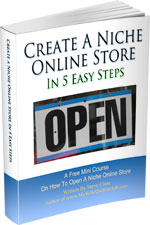
Ready To Get Serious About Starting An Online Business?
If you are really considering starting your own online business, then you have to check out my free mini course on How To Create A Niche Online Store In 5 Easy Steps.
In this 6 day mini course, I reveal the steps that my wife and I took to earn 100 thousand dollars in the span of just a year. Best of all, it's absolutely free!


